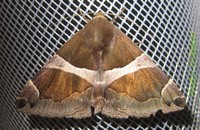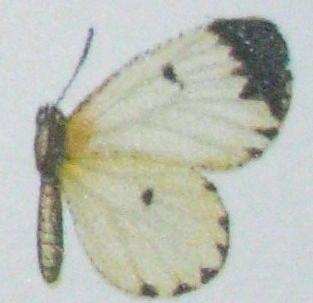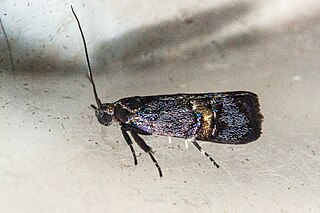
Carlo Morici is an Italian botanist specialized in palm trees and also known for his landscaping projects.
Coccothrinax torrida is a palm endemic to southeastern Cuba. It is known from a single isolated hill on the coast of the Guantánamo Province. The climate of the area is described as semi-desert with 9 or 10 dry months. Like other members of the genus, C. torrida is a fan palm. Trees are single-stemmed, between 2 and 8 m tall with stems 2.5 to 3.9 cm in diameter. The fruit is creamy white, 4.8–6.3 mm in diameter.

Dysgonia torrida, commonly known as the jigsaw, is a species of moth in the family Erebidae. The species was first described by Achille Guenée in 1852. It is found from the tropical and subtropical areas of Africa to Spain, southern Italy, Greece, Syria, Israel, Iran, Uzbekistan towards India, Sri Lanka and Myanmar.

Pentila torrida is a butterfly in the family Lycaenidae. It is found in Gabon, the Republic of the Congo and Bas-Fleuve in the Democratic Republic of the Congo.
Cyana torrida is a moth of the family Erebidae. It was described by William Jacob Holland in 1893. It is found in Equatorial Guinea.
Serixia is a genus of longhorn beetles of the subfamily Lamiinae, containing the following species:
Serixia buruensis is a species of beetle in the family Cerambycidae. It was described by Stephan von Breuning in 1958.
Serixia cinereotomentosa is a species of beetle in the family Cerambycidae. It was described by Stephan von Breuning in 1958.
Serixia novaebritanniae is a species of beetle in the family Cerambycidae. It was described by Stephan von Breuning in 1958.
Serixia sarawakensis is a species of beetle in the family Cerambycidae. It was described by Stephan von Breuning in 1958. It is known from Borneo.
Serixia flavicans is a species of beetle in the family Cerambycidae. It was described by Stephan von Breuning in 1950. It is known from Borneo.
Serixia nilghirica is a species of beetle in the family Cerambycidae. It was described by Stephan von Breuning in 1963.
Serixia longicornis is a species of beetle in the family Cerambycidae. It was described by Francis Polkinghorne Pascoe in 1858.
Serixia prolata is a species of beetle in the family Cerambycidae. It was described by Francis Polkinghorne Pascoe in 1858.
Serixia sedata is a species of beetle in the family Cerambycidae. It was described by Francis Polkinghorne Pascoe in 1862.
Serixia phaeoptera is a species of beetle in the family Cerambycidae. It was described by Per Olof Christopher Aurivillius in 1927.
Serixia atritarsis is a species of beetle in the family Cerambycidae. It was described by Maurice Pic in 1929.
Serixia inconspicua is a species of beetle in the family Cerambycidae. It was described by Gardiner in 1936.
Amara torrida is a species of seed-eating ground beetle in the family Carabidae. It is found in North America, temperate Asia, and Europe.

Hierodoris torrida is a species of moth in the family Oecophoridae. This species is endemic to New Zealand and can be found in the southern parts of the North Island, in Rangitikei and Wellington, and in the east of the South Island, in the Marlborough Sounds, Kaikōura, Mid and South Canterbury. The larvae of this species is unknown as is much of the biology of this species and its larval hosts. The adult moth prefers lowland forest habitat. It is classified as "At Risk, Relict'" by the Department of Conservation.


